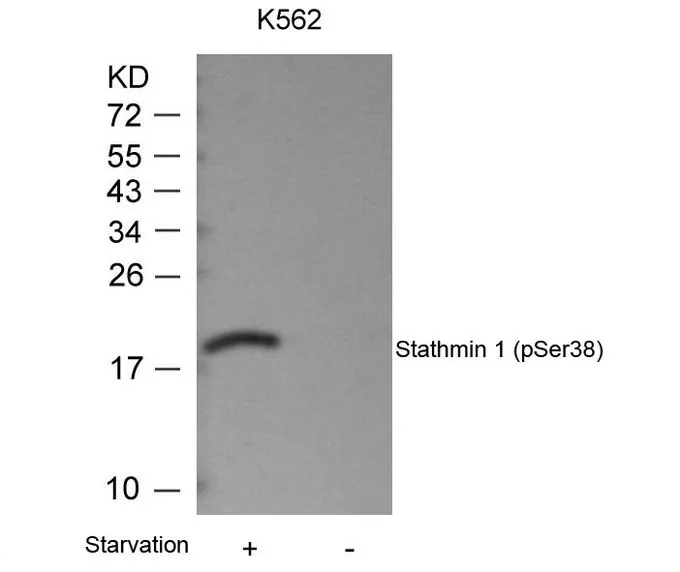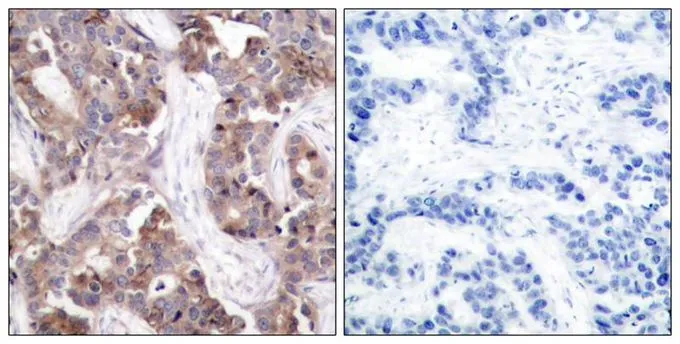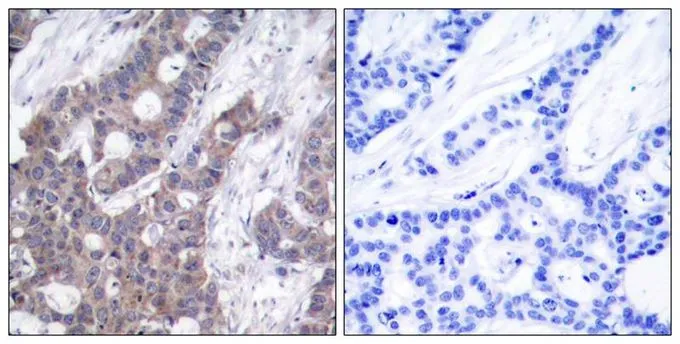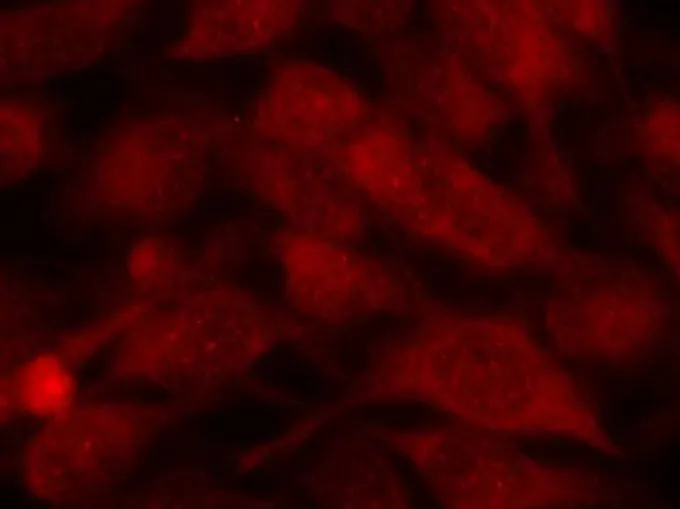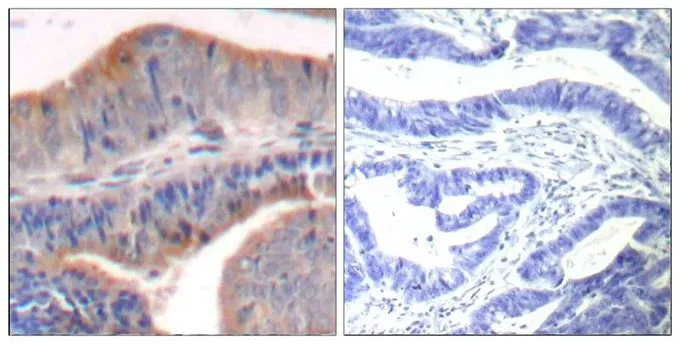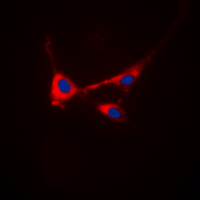
IHC-P analysis of human breast carcinoma tissue using GTX50261 Stathmin 1 (phospho Ser38) antibody. Left : Primary antibody Right : Primary antibody pre-incubated with the antigen specific peptide
Stathmin 1 (phospho Ser38) antibody
GTX50261
ApplicationsWestern Blot, ImmunoHistoChemistry, ImmunoHistoChemistry Paraffin
Product group Antibodies
ReactivityHuman, Mouse
TargetSTMN1
Overview
- SupplierGeneTex
- Product NameStathmin 1 (phospho Ser38) antibody
- Delivery Days Customer9
- Application Supplier NoteWB: 1:500-1:1000. IHC-P: 1:50-1:100. *Optimal dilutions/concentrations should be determined by the researcher.Not tested in other applications.
- ApplicationsWestern Blot, ImmunoHistoChemistry, ImmunoHistoChemistry Paraffin
- CertificationResearch Use Only
- ClonalityPolyclonal
- Concentration1 mg/ml
- ConjugateUnconjugated
- Gene ID3925
- Target nameSTMN1
- Target descriptionstathmin 1
- Target synonymsC1orf215, LAP18, Lag, OP18, PP17, PP19, PR22, SMN, stathmin, leukemia-associated phosphoprotein p18, metablastin, oncoprotein 18, phosphoprotein 19, phosphoprotein p19, prosolin, stathmin 1/oncoprotein 18, testicular tissue protein Li 189, transmembrane protein C1orf215
- HostRabbit
- IsotypeIgG
- Protein IDP16949
- Protein NameStathmin
- Scientific DescriptionThis gene belongs to the stathmin family of genes. It encodes a ubiquitous cytosolic phosphoprotein proposed to function as an intracellular relay integrating regulatory signals of the cellular environment. The encoded protein is involved in the regulation of the microtubule filament system by destabilizing microtubules. It prevents assembly and promotes disassembly of microtubules. Multiple transcript variants encoding different isoforms have been found for this gene. [provided by RefSeq, Feb 2009]
- ReactivityHuman, Mouse
- Storage Instruction-20°C or -80°C,2°C to 8°C
- UNSPSC12352203
References
- Hsieh YY, Du JL, Yang PM. Repositioning VU-0365114 as a novel microtubule-destabilizing agent for treating cancer and overcoming drug resistance. Mol Oncol. 2024,18(2):386-414. doi: 10.1002/1878-0261.13536Read this paper
- Xu K, Harrison RE. Down-regulation of Stathmin Is Required for the Phenotypic Changes and Classical Activation of Macrophages. J Biol Chem. 2015,290(31):19245-60. doi: 10.1074/jbc.M115.639625Read this paper

